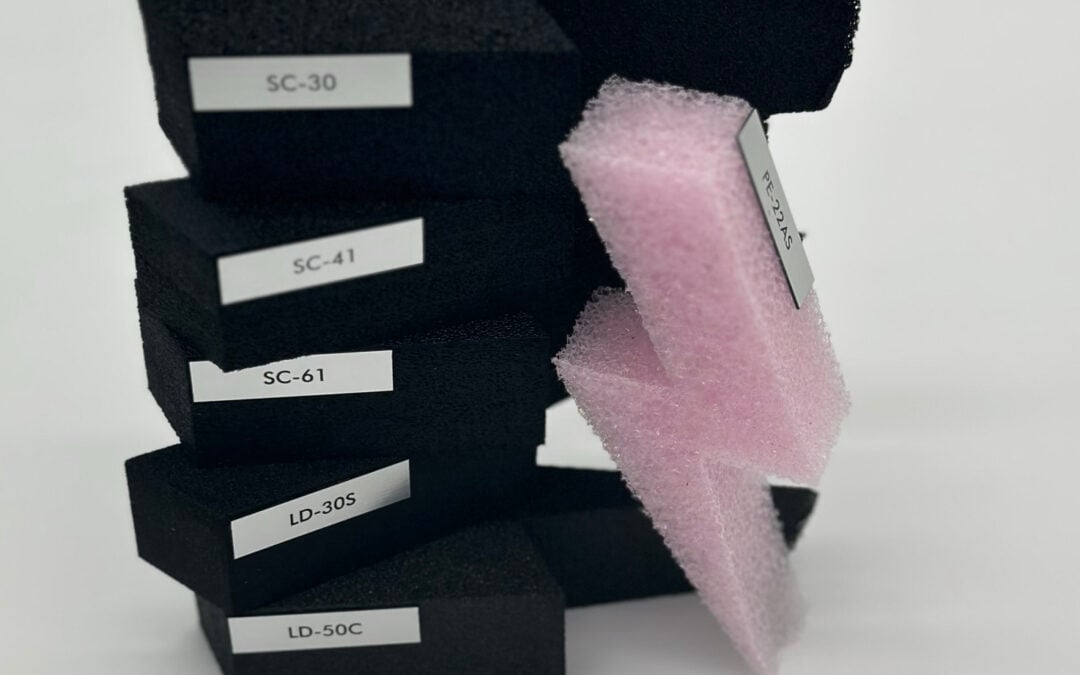Conductive, static dissipative, and anti static are all terms that related to the amount of surface resistivity that a material is providing. There are a number of standards that relate to this family of material, so the best course of action is to identify the surface resistivity required by the applications. For foams intended to conduct or dissipate electrostatic discharge (ESD), the common measurement is surface resistivity, represented in OHMs to the tenth per square.
What is the difference between these terms?
Static Control (SC)
We use the term SC for our privately branded ESD XLPE. It has carbon added to the polymer mix to provide a surface resistivity range of 105 to 109, which crosses over both the Static-dissipative range as well as the conductive range.
Static-Dissipative (SD)
This is a grade of foam that prevents or inhibits the build up of static electricity with a surface resistivity of 106 to 1011. The SD foams have a lower carbon content than the conductive foams. We offer Azote static dissipative grade from Zotefoams.
Conductive (CN)
Conductive is made with carbon with a permanent surface resistivity of 103 to 105. This offers a quicker transfer of any static charge to grounding source. We offer 3 conductive Azote foams from Zotefoams.
Anti-Static (AS)
This term typically applies to a pink straight PE versus XLPE. It is a grade of foam that inhibits triboelectric charging (buildup of an electric charge by rubbing or contacting with another material). Anti-Static PE has a temporary measure added which dissipates over time. We offer a variety of Anti-Static straight PE from Sealed Air. The density options range from 1.2lb/ft³
to 4lb/ft³ with both sheet and roll options.
The measurement of electrical resistance is called the ohm. This measurement indicates the degree to which a given material impedes the flow of electricity, which is called the resistivity level of the material. Surface resistivity of foam is measured in OHMs to the tenth per square, with a resistivity of 102 being a very low level of resistance and 1011 a very high level of resistance. This means that a low resistivity item will readily conduct (conductive) electricity and a high level of resistivity will prevent most or all electricity from flowing through the foam. You can gather the resistivity level at how strong or weak the flow of electricity is through a given material with the use of a Surface Resistance Meter. A reading of a lower number of ohms indicates the resistivity allows for more free flowing of electrical charges. Expectedly, a higher number of resistance means the harder it is for electrical charges to travel through the material.

